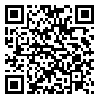BibTeX | RIS | EndNote | Medlars | ProCite | Reference Manager | RefWorks
Send citation to:
URL: http://jhsw.tums.ac.ir/article-1-5286-en.html
Introduction: Outdoor workers are exposed to heat from solar radiation and the atmospheric conditions, in addition to the heat from the working process, which is worse by global warming. The purpose of this study was to evaluate heat stress based on wet bulb globe temperature index and also to examine the relationship between WBGT and physiological indices among outdoor workers of Shabestar city.
.
Material and Methods: This cross-sectional study was conducted in August 2014. WBGT measurements were taken according to ISO7243 standard in different hours. The physiological response of 53outdoor workers (including heart rate, systolic and diastolic blood pressure, oral temperature, and skin temperature) were measured among9occupationalgroups, including municipal workers, concrete makers, porters, construction and road making workers, stonemasons, farmers, traffic officers, and street vendors.
.
Result: The mean WBGT index for all outdoor workers, except for municipal workers, street vendors, traffic officers and stonemason, was greater than threshold limit. The highest average WBGT index was for construction workers and the lowest was for municipal workers (respectively 27 and 26 °C). Moreover, a significant direct association was reported between the WBGT index and physiological parameters (P <0.0001), with the highest correlation coefficient belonged to heart rate (r=0.492).
.
Conclusion: According to WBGT index, porters, Concrete makers, construction and road makers, and farmers had the highest exposure at all times of the day while the lowest level was related to municipal workers. What is more, heat stress showed a significant correlation with the study strains. Therefore, it is essential to conduct further research and in order to represent preventive countermeasures for the workers in this field.
Received: 2015/07/12 | Accepted: 2015/07/12 | Published: 2015/07/12
| Rights and permissions | |
 |
This work is licensed under a Creative Commons Attribution-NonCommercial 4.0 International License. |





